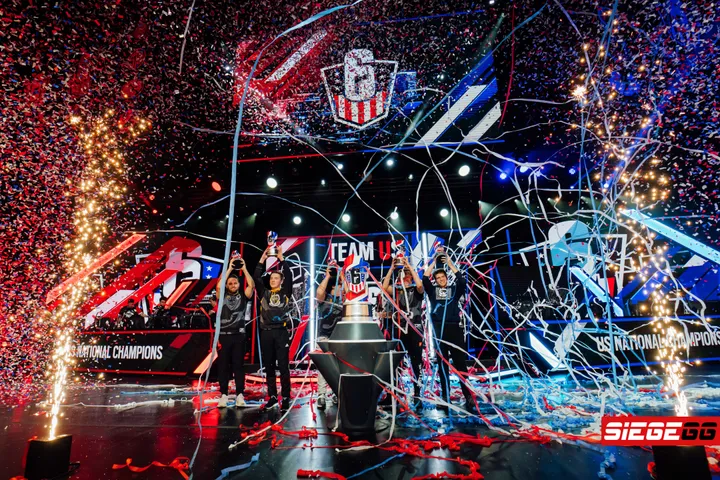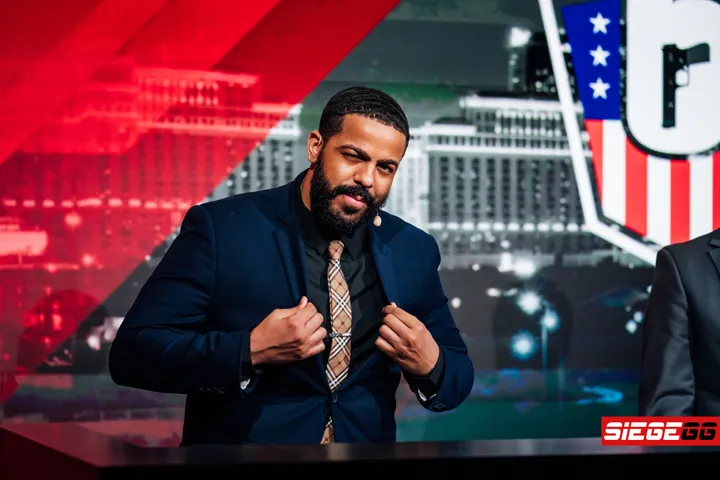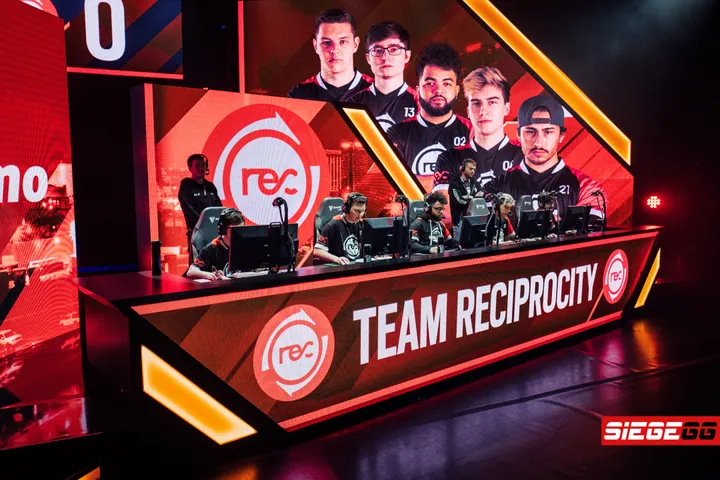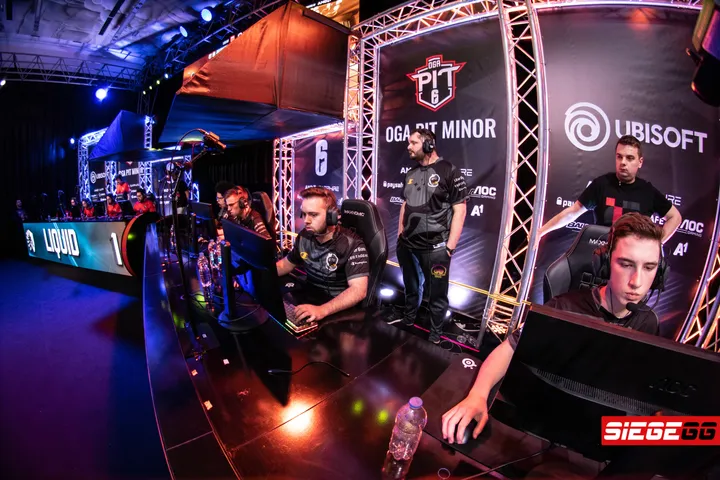
A newcomer tuning into the Rainbow Six US Nationals Finals 2019 on December 15th might have been surprised to learn that this was a competition that had begun almost exactly eight months prior. They may have also been surprised to learn that neither of the finalist teams -- Spacestation Gaming and Team Reciprocity -- had played in the competition for six of those months, or that the vast, vast majority of teams involved in the competition couldn't even be classed as semi-professional.
For a competition that ended with a set of typical LAN Finals, USN was a competition that was anything but normal -- for better and for worse. It was an event that was unusual in almost all aspects; presentation, teams, format, and length. And whilst I think that it can be said without any shadow of a doubt that the whole competition hardly turned out perfectly, there's plenty to learn from an event given so much attention by Ubisoft and ESL that bucks the trend of their other large events.

Format
We may as well start with the elephant in the room. I don't think I've ever seen a competitive gaming event with as weird a format as USN, and it's difficult to even identify the possible rationale behind some of the decisions made (though it was not all bad).
Note that this mostly applies to the stage system that teams qualified to enter the Finals. The Finals themselves were pretty standard, except for one core issue that plagued the entire event -- split conferences.
Probably in an attempt to replicate physical sports such as American football and ice hockey, the decision was made that divisions would be made of teams from the West and East of the US. Not only is this awkward when teams aren't necessarily based in a single area of the country, but there's a high chance of the conferences stacking up differently in overall strength and density of strong teams -- particularly so as larger organisations have a tendency to clump together geographically.
The conference system also meant that at each stage, only one team from each conference could qualify for the Finals. This had its advantages -- at each stage there was a tangible reward for the best team from each conference, something to win, but with a meagre $500 reward for even coming second in each stage, it led to a reward structure that was insanely top heavy and that failed to reward the smaller teams which the event was clearly encouraging to take part.
Granted, that stage system itself was a more baffling decision. Having 3 different main qualifiers per conference led to the dilution of the qualifier spots available, and also led to the final stage and wildcard qualifier only having a scant few strong, Pro-League level teams involved and most importantly in my opinion - led to the extreme length of the tournament as well as a different game state from one stage to the next.
With no disrespect to the Susquehanna Soniqs, who eventually finished joint-third, they had qualified for the Finals by winning a map on Oregon, with Mozzie and Gridlock unavailable for competitive play. By the time of the Finals in December, this map had been removed from the pool, the operators were available to play and two members of the team's roster had changed. Whilst I would never suggest running the December Finals on a game build from April (I doubt it would even be doable), I think it does suggest that running a long-form tournament with such a format in a game which can undergo significant changes bi-monthly is not the choice for competitive integrity.
I get the rationale behind the format -- copying traditional sports with a year long competition to find the best domestic team with an ultimate "playoffs stage", whilst trying not to overlap with the Pro League system, and ensuring teams competing in other events have multiple chances to qualify. The format also allows a good occasional broadcast of each stage's finals. But ultimately, it proved overcomplicated, stretched out way beyond what was reasonable, and in the end an awful lot of fuss for not much reward for the vast majority of teams involved.
I feel a much better solution would have been a single large qualifier (with a double elimination format), or at least reducing the stage system into two stages without a wildcard and holding it within the same month. For what eventually turns out to be a large but not massive LAN with a decent prize pot for the winner, but nothing like an Invitational spot, it's questionable if the league deserves all the fanfare and time ESL and Ubisoft put into it.
Still, I may have ragged on this format a lot, but that's not to say nothing good came out of it at all.
Presentation
While the format of the competition was peculiar, Ubisoft and ESL clearly invested a lot in it, and as far as I'm concerned, this is where the value of the US Nationals really lies. I don't like the stage system from a competitive standpoint, but from a viewership standpoint, it was possibly my favourite Rainbow Six Siege competition to watch in 2019.
Each individual stage made for a small competition shown in a single evening, presented and commentated by Blu, Stoax, and Velly, with Marciu spectating, along with pretty typical production values from ESL on par with something like the Pro League. On the other hand, there were teams many had likely never seen before, fighting it out in matches which arguably had way less importance to them than the average Pro League encounter.
Ultimately, I found this to be a recipe for a very enjoyable viewing experience. The production value of a Pro League broadcast with less stakes and casters, whilst still engaged with the match, being a bit more laid-back, occasionally engaging with the chat and having much more casual banter than a typical broadcast was a good mix. It's fun, especially in the later rounds where the casters have settled more and found their chemistry.
I think if any lesson can be taken from USN from a production standpoint, it should be that these sorts of more casual casts for lower-level matches can work out really well, and I think it could be great if a similar environment was at least tested for Challenger League matches.

Finals
Of course, by the time LAN Finals rolled around, the matches had turned more serious and the level of presentation had been brought up to that of a bit below a Pro League Finals level, which is to say it was fine, though that cozy, casual atmosphere had obviously fallen by the wayside -- but with the matches shaping up to involve mostly big teams and a big prize pot, that was only appropriate. Even the neat gimmick of the eye-tracking occasionally popping up was welcomed.
Unfortunately the LAN was a bit rubbish otherwise, at least from a match standpoint. Only a single map was won on the losing side the whole event, and notably both the semi-finals and the grand final were very clear-cut and boring matches.
To some degree this can be mostly attributed to dumb luck, but it must be said that the lack of inter-division matches until the final and the qualification process probably contributed.
Ultimately, at the end of the LAN, the main thing I'm left questioning is why the resources went to an event that whilst considered "major", always felt like something not worth taking too seriously. DreamHack Montreal and OGA PIT seemed to have much less in terms of funding and both of those led into direct invites to the biggest event on the Siege calendar.

As much as I enjoyed the good production values and casting, particularly in the early stages, that does not come cheap, never mind everything else involved in holding an event at a large hotel in Vegas for three days. When the Challenger League feels like it has a big problem with visibility and polish, was investing so much into an overall mediocre event really the right play?

So, overall, USN was a mixed bag. Unfortunately, as much as I enjoyed watching it at times, it did end up feeling like a bit of a waste, like a bit of a tumour that had grown on top of the other, more important events on the Siege calendar that just turned up to get cut out in mid December.
US Nationals will probably be back next year, and I whilst I may have flogged it for a good few paragraphs now, I don't think it's that far from being a competition where there's more good to reflect on than bad. A few small changes and it could be something really valued on the Siege calendar and an event with real hype behind it.
We can only hope.
SiegeGG is supported by its audience. When you purchase through links on our site, we may earn an affiliate commission. Learn more about how readers support SiegeGG.